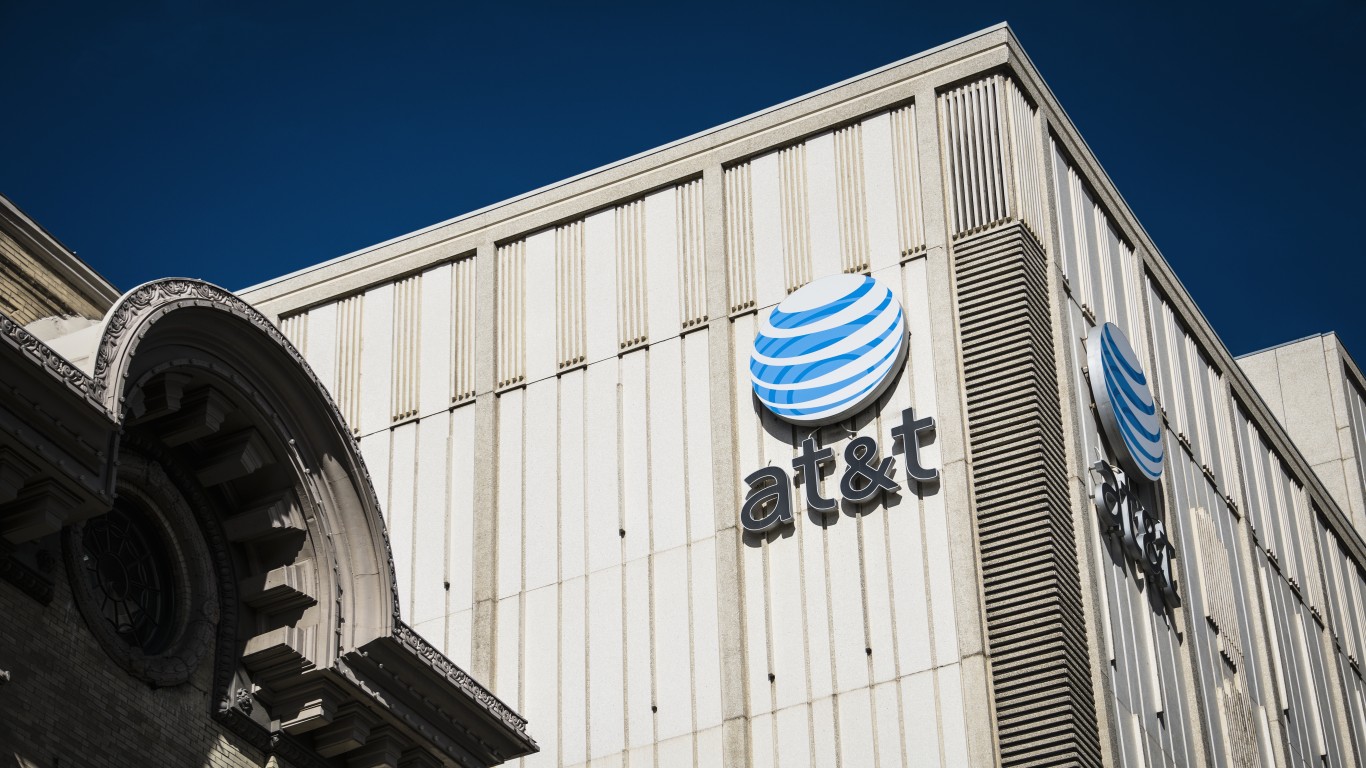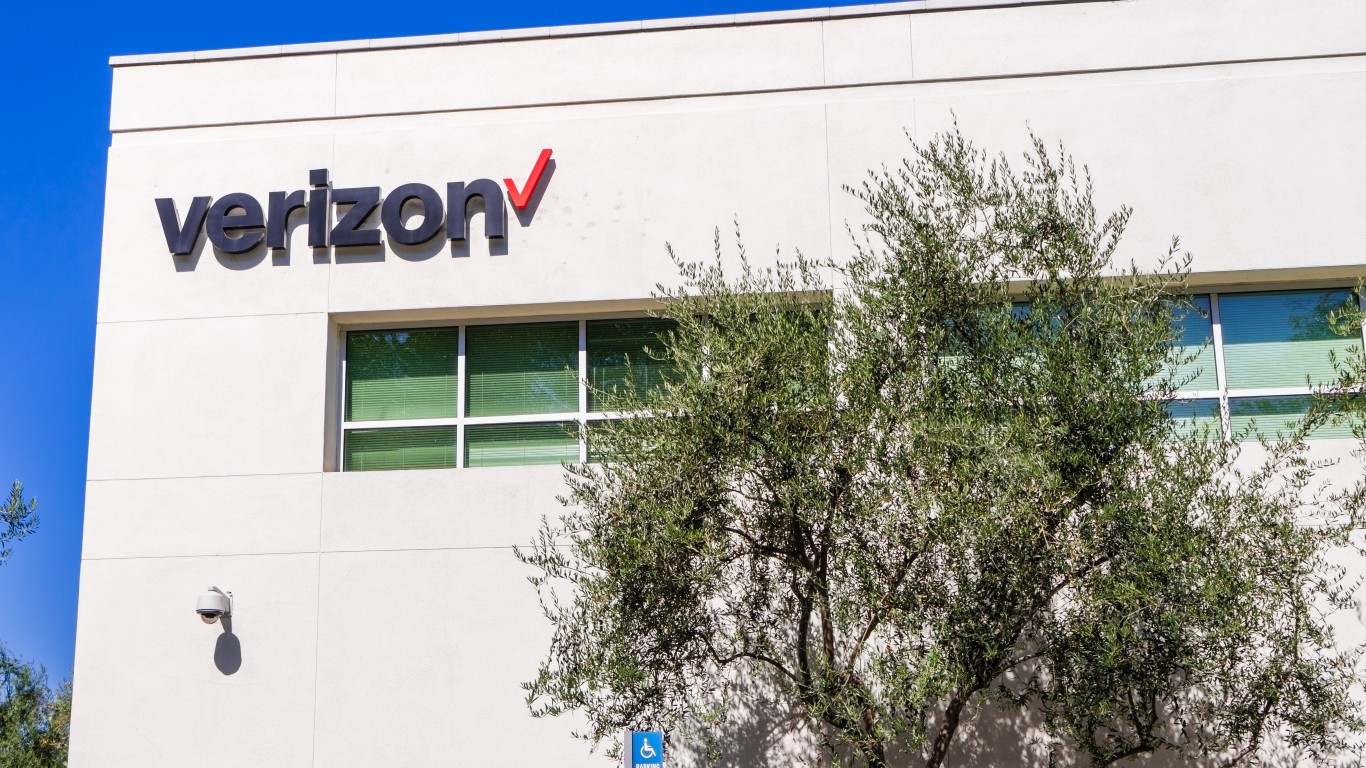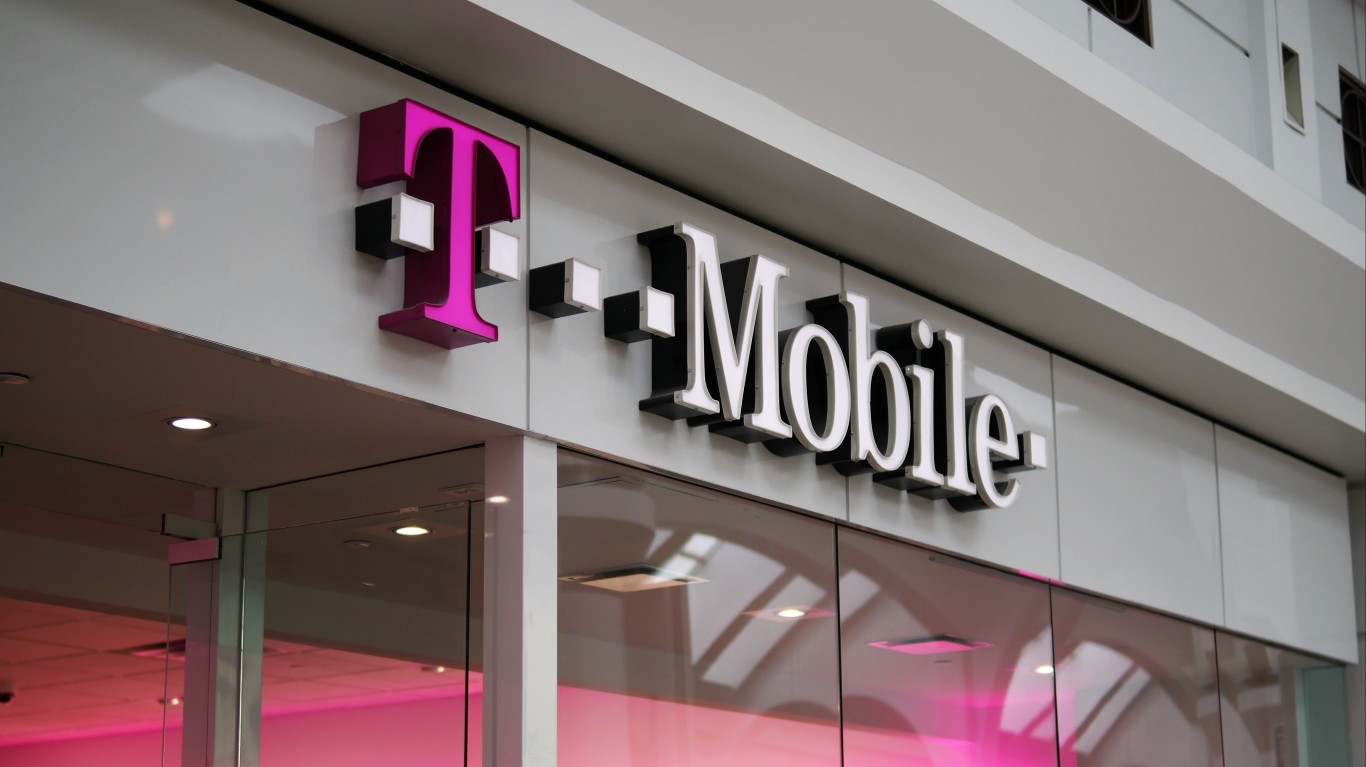
It hasn’t been the best year for AT&T Inc. (NYSE: T), down 23.9% since Jan. 1. Of particular concern are big losses to the company’s subscription TV services as Americans continue to cut the cable cord.
But the stock remains on many analysts’ “hold” lists, thanks in large part to its reliable dividend payout. Despite the challenging business environment and a high debt load, AT&T announced, “As it has for the past 36 years, the company looks forward to continuing to pay a quarterly dividend to shareholders.”
An underreported plus for the telecommunications giant is the quiet but steady rollout of 5G. The coronavirus hit hasn’t slowed down progress in this area. If anything, the new work-at-home economy may increase demand for faster 5G services.
Steady Rollout
5G is the next generation of cellular service, offering faster speeds and lower latency. Experts expect new applications (think 2021, 2022) in the same way that 4G made apps like Snapchat and Uber possible. Virtual reality technology could particularly benefit from 5G.
In late April, AT&T nearly doubled the availability of its low-band 5G network with a rollout to 90 new areas, including big markets like Chicago, Seattle, Tampa and New Orleans. “We remain focused on launching AT&T 5G in more markets and to more customers across the country … and plan to reach nationwide coverage this summer,” said Chris Sambar, executive vice president.
With the additions, AT&T 5G now covers 120 million people, while competitor T-Mobile US Inc. (NASDAQ: TMUS) covers over 200 million. Verizon lags behind, expecting to be in 60 cities by the end of 2020.
“We expect to have mobile 5G service nationwide to more than 200 million people by the second quarter 2020, and with that availability, we anticipate the introduction of 5G handsets and devices will contribute to a renewed interest in equipment upgrades,” AT&T said in an SEC filing.
Upgrade Opportunities
The introduction of 5G indeed offers great potential for customers to upgrade their phones. Apple Inc. (NASDAQ: AAPL) devices currently don’t work with the fifth generation of cellular technology. The allure of 5G could be an extra nudge for Apple fans who might otherwise sit out an upgrade during an economic downturn.
While the iPhone 12 is rumored to include 5G, coronavirus-related supply chain issues could postpone the release. Still, analysts expect a new Apple phone later this year.
Samsung Electronics Co. Ltd. already released several 5G devices this year, including the Galaxy S20. While the Korean company is generally upbeat on 5G, an executive warned on a recent earnings call: “It’s difficult to rule out that if the Covid-19 impact expands or becomes more prolonged, carriers may decide to delay 5G investment, which may have a negative impact on our business.”
Consumers using older devices will also need to upgrade. “As of December 31, 2019, about 7 percent of our postpaid subscribers were using 3G handsets, and we expect them to transition to newer technologies,” AT&T reported. The company expects to discontinue 3G wireless service entirely by early 2022.
How HBO Max Comes Into Play
Increased adoption of 5G devices could also boost AT&T’s HBO Max, the new streaming service that will include HBO along with premium movies, TV shows and new original content. Beyond pay TV subscriptions, customers of select AT&T wireless plans will get HBO Max included, beginning May 27.
The service “will be included in our AT&T Unlimited Elite wireless plan, which offers 30 GB of mobile hotspot data per line, HD streaming—all for $50 (plus taxes and fees) per line when you have 4 lines and sign up for autopay and paperless bill,” the company said.
As a promotion, customers on lower tier wireless plans will be offered one-month free trials to the service. The company hopes the inclusion of popular TV shows like “Friends” and “Big Bang Theory” and movies as diverse as “Casablanca” and “The Matrix” will draw subscribers.
AT&T knows that a growing pool of customers are comfortable with consuming entertainment on their cell phones. 5G should grease this adoption speed.
The challenge as always is getting young tech-savvy audiences to pay for services like HBO Max. Studies show younger viewers prefer free, ad-supported streaming, and don’t mind watching ads in exchange. An ad-supported version of HBO Max could address this concern.
The Big 3
With the merger of T-Mobile and Sprint, there are now three major wireless carriers in the U.S.: AT&T, T-Mobile and Verizon Communications Inc. (NYSE: VZ). T-Mobile is up 12.51% year to date, while Verizon is down 8.09%. In terms of stock market performance, AT&T has had the worst year, down 23.9%.
All three companies are moving aggressively in the 5G space, which is a long-term play. Unlike some trends of the past, this is going to take years of investments and may offer some companies clear revenue and earnings visibility for years.
For Wall Street, T-Mobile has a compelling 5G story with its Sprint merger, and the stock price has held up. But AT&T has the advantage of being diversified outside of the wireless sector.
AT&T CEO Randall Stephenson was optimistic after first quarter earnings. “We have a strong cash position, a strong balance sheet, and our core businesses are solid and continue to generate good free cash flow — even in today’s environment,” he said. “In light of the pandemic’s economic impact, we’ve already adjusted our capital allocation plans and suspended all share retirements. As a result, we’re able to continue investing in critical growth areas like 5G, broadband and HBO Max, while maintaining our dividend commitment and paying down debt.”
It’s Your Money, Your Future—Own It (sponsor)
Retirement can be daunting, but it doesn’t need to be.
Imagine having an expert in your corner to help you with your financial goals. Someone to help you determine if you’re ahead, behind, or right on track. With SmartAsset, that’s not just a dream—it’s reality. This free tool connects you with pre-screened financial advisors who work in your best interests. It’s quick, it’s easy, so take the leap today and start planning smarter!
Don’t waste another minute; get started right here and help your retirement dreams become a retirement reality.
Thank you for reading! Have some feedback for us?
Contact the 24/7 Wall St. editorial team.



